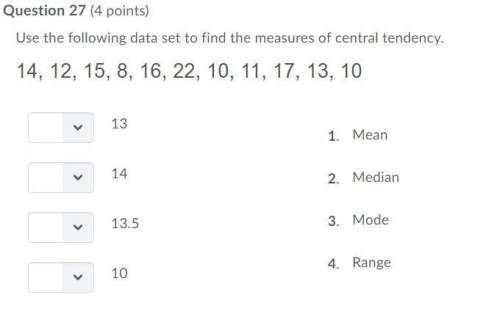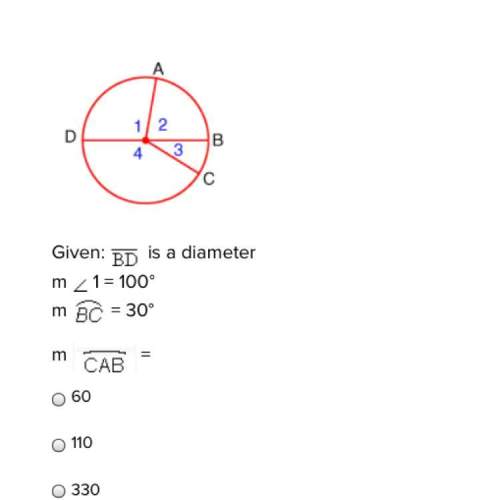
Mathematics, 06.04.2021 02:00 brad59
Occasionally, warning flares of the type contained in most automobile emergency kits fail to ignite. A consumer group wants to investigate a claim that the proportion of defective flares made by a particular manufacturer is higher than the advertised value of 0.10. A large number of flares will be tested, and the results will be used to decide between H0: p = .1 and Ha: p > .1, where p represents the proportion of defective flares made by this manufacturer. If H0 is rejected, charges of false advertising will be filed against the manufacturer.
1. Explain why the alternative hypothesis was chosen to be Ha: p > .1.
a. The alternative hypothesis was chosen because the true proportion of defective flares is more than .1.
b. The alternative hypothesis was chosen arbitrarily.
c. The alternative hypothesis was chosen to help with filing charges against the manufacturer.
d. The alternative hypothesis was chosen because people wanted to know whether the proportion of defective flares exceeds .1. No one would mind if the proportion of defective flares was less than .1.
2. In this context, describe a Type I error, and discuss the consequences.
a. A Type I error would be the conclusion that the proportion of defective flares exceeds 10% when, in fact, the proportion is 10% or less. The consequence of this decision would be the filing of charges of false advertising against the manufacturer, who is not guilty of such actions.
b. A Type I error would be the conclusion that the proportion of defective flares is 10% when, in reality, the proportion is in excess of 10%. The consequence of this decision would be the filing of charges of false advertising against the manufacturer, who is not guilty of such actions.
c. A Type I error would be the conclusion that the proportion of defective flares is 10% when, in reality, the proportion is in excess of 10%. The consequence of this decision is to allow the manufacturer who is guilty of false advertising to continue bilking the consumer.
d. A Type I error would be the conclusion that the proportion of defective flares exceeds 10% when, in fact, the proportion is 10% or less. The consequence of this decision is to allow the manufacturer who is guilty of false advertising to continue bilking the consumer.

Answers: 2


Another question on Mathematics

Mathematics, 21.06.2019 16:30
What is the difference between regular convex and concave polygons
Answers: 1

Mathematics, 21.06.2019 19:30
If y varies directly as x2 and y=6 when x=6, find the constant of variation.
Answers: 2

Mathematics, 22.06.2019 00:00
You are looking for your first credit card. you plan to use this credit card only for emergencies and to pay the credit card balance in full each month. which credit card feature is most important? a. no annual fee b. low apr c. generous rewards program d. no balance transfer fee select the best answer from the choices provided
Answers: 2

Mathematics, 22.06.2019 00:30
Julie multiplies 6.27 by 7 and claims the product is 438.9 .explain without multiplying how you know juliesanswer is not correct.find the correct answer
Answers: 1
You know the right answer?
Occasionally, warning flares of the type contained in most automobile emergency kits fail to ignite....
Questions

Mathematics, 22.08.2021 21:20

Mathematics, 22.08.2021 21:20

English, 22.08.2021 21:20

Mathematics, 22.08.2021 21:20

Chemistry, 22.08.2021 21:20


Mathematics, 22.08.2021 21:30

Mathematics, 22.08.2021 21:30

Chemistry, 22.08.2021 21:30

Mathematics, 22.08.2021 21:30




English, 22.08.2021 21:30

English, 22.08.2021 21:30




English, 22.08.2021 21:30





